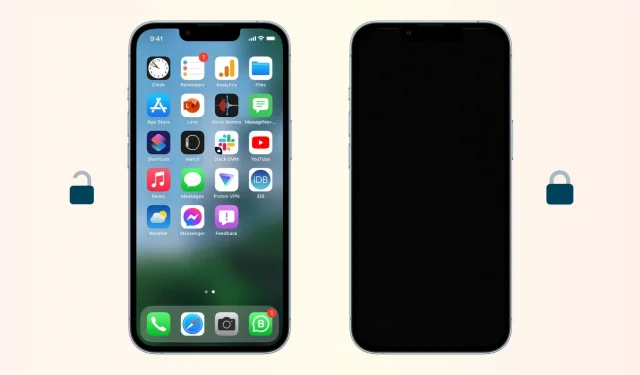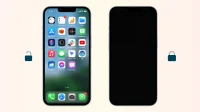Most people have a habit of pressing the side button to manually lock their iPhone when they’ve finished using it. However, some, especially the elderly, do not. They know that as soon as they stop using their iPhone, the display will automatically turn off and lock.
This is made possible by the handy Auto-Lock feature, which locks your iPhone if it hasn’t been used for a while. But sometimes your iPhone may not go to sleep automatically. This results in battery drain and privacy risk as anyone can get inside your unlocked iPhone and view your photos, contacts, messages, browsing history, wallet, etc.
Luckily, fixing a faulty Auto-Lock setting isn’t difficult, and we’ll show you how.
Set the correct auto-lock duration
Your iPhone cannot automatically turn off the display and lock the device due to incorrect auto-lock settings. You can quickly fix this by doing the following:
- Open Settings and tap on Display & Brightness.
- Tap Auto-Lock.
- Choose a shorter duration, such as 30 seconds or 1 minute. If you choose Never, your iPhone will not automatically go to sleep.
Is the Auto-Lock option greyed out? Disable low power mode and then you can enter auto lock settings to change it.
Disable features based on attention
An iPhone with Face ID, i.e. iPhone X and later (except iPhone SE), has an Attention Aware feature that checks your “attention”before dimming the display and then locking it. By “attention”we mean that your iPhone uses the Face ID sensors to figure out if you’re looking at your screen or not before dimming the display, expanding notifications, lowering ringtone volume, etc.
If you don’t like this feature, it’s easy to disable it:
- Open Settings and tap on Face ID & Passcode.
- Turn off features with attention.
From now on, your iPhone will not require your attention and will automatically go to sleep after a set period of Auto-Lock inactivity.
Learn about Raise to Wake and Press to Wake
The Raise to Wake feature lights up on the iPhone screen when you pick up iPhone. And with Tap to Wake, your iPhone’s display turns on with a tap. Both of these settings are enabled by default.
As a result, you might think that your iPhone isn’t locking and turning off the display, but it isn’t. Your iPhone is automatically locked. It simply wakes up the screen when you pick up your iPhone, fiddle with it, or even touch the display. You can disable them if you wish:
- How to disable Raise to Wake on your iPhone
- How to disable Tap to Wake and prevent iPhone screen from waking up with tap
Try logging out of video apps like TV and VLC.
Have you watched a video on your iPhone but not now? Due to iOS glitches, your iPhone may not sleep even after you are no longer in the video app. To fix this, force close the video app from the app switcher. To do this, swipe up from the bottom of the screen or double-tap the Home button. Then drag the video app card all the way up to close it.
Restart your iPhone
Often, your iPhone will experience multiple crashes simply because you haven’t restarted it for a long time. To ensure smooth operation, turn your iPhone off and on again. Try to develop the habit of doing this at least once every three days.
Install the latest version of iOS
If you’re using an older version of iOS, consider updating to the latest version, which should fix the bugs. To do this, go to Settings > General > Software Update.
Accept Compromises or Stop Using the iOS Beta
Are you using the iOS developer beta or public beta on your iPhone? If yes, you’ve signed up for inconvenience, and your iPhone not automatically going to sleep could be one of them. To fix this issue, you can either revert to regular iOS or consider updating to the latest beta version of iOS.
Reset All iPhone Settings
If your iPhone still can’t lock itself, reset all settings. This will restore all settings to their default state and may fix your current issues.
Erase and restore your iPhone
- Backing up iPhone to iTunes or iCloud and why it’s important
- How to Erase Everything on Your iPhone, iPad or iPod touch
- How to set up iPhone from iCloud backup
- How to set up an iPhone from an iTunes backup
Contact Apple Support
Finally, if all else fails, contact Apple Support and arrange to visit the nearest Apple Store or Apple Authorized Service Provider. They will inspect your device and most likely fix the problem.


